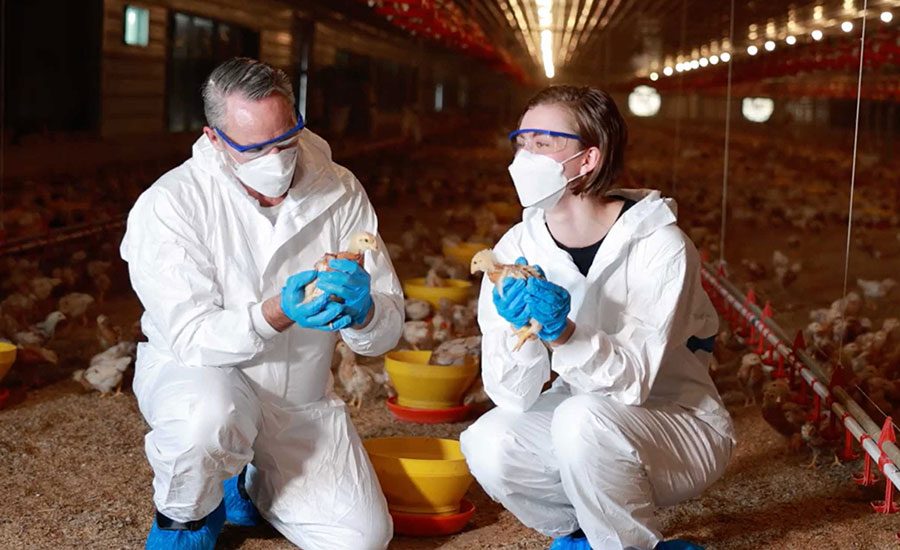Researchers from the Danish Technical University National Food Institute (DTU NFI) have achieved an 80 percent reduction in Campylobacter in free-range chickens by adding biochar to their feed. The trial was conducted as part of the SafeChicken project at DTU NFI, which is led by Senior Researcher Brian Lassen, Ph.D.
The present study, published in Chicken Science, aimed to test feed and water additives, which had shown promise for Campylobacter reduction in prior laboratory experiments, under real-world conditions. Alongside biochar, organic acids were also added to the chickens’ drinking water and assessed for their efficacy in reducing pathogen load. It was important to test the methods in a free-range production environment, where biosecurity measures are more challenging to implement.
The study comprised three different trials on the same farm. For the trials, different groups of newly hatched chickens were given test food and water supplementation including biochar, whole wheat grains or oat husks, a probiotic-like product, or organic acids, and were compared against a control group given a diet of standard feed pellets and water. The chickens were given access to the outdoors after 36 days. Air samples on the farm were collected weekly; water and boot sock samples were collected on days four, 36, and 59; and and cecal samples were collected from chickens slaughtered at 36 days and 56 days. The samples were analyzed for Campylobacter, and isolates were subjected to whole genome sequencing (WGS).
Biochar was found to be the most effective pathogen-reducing feed supplement at 59 days, with a significant reduction in the presence of C. jejuni at 0.70 log10 colony forming units per gram (CFU/g). The results showed an initial increase in the cecal C. jejuni counts on day 36 before a reduction on day 59, suggesting that biochar in the intestines of broilers may need a continuous and longer duration of administration to reduce Campylobacter. No adverse health effects were observed in chickens fed biochar.
Although supplementation with organic acids resulted in a 76 percent Campylobacter reduction at day 36—half of the chicken breed’s full slaughter age—the effect diminished by slaughter age (59 days), suggesting that the timing of organic acid administration may need to be optimized.
The researchers will continue to study how biochar affects the microbiome of chickens leading to Campylobacter reduction, as a better understanding of this mechanism could allow for its application to conventionally raised poultry and various livestock. Other methods to mitigate Campylobacter, including slaughterhouse interventions, are being researched as part of the SafeChicken project, which will run until fall 2025.
Authors on the study alongside Dr. Lassen include DTU’s Nao Takeuchi-Storm, Ph.D.; Cristina Calvo-Fernandez, Ph.D. candidate; Annette Nygaard Jensen, Ph.D. candidate; Giulia Ravenni, Ph.D.; Marianne Sandberg, D.V.M., Ph.D.; and Ulrik Birk Henriksen, Ph.D.







